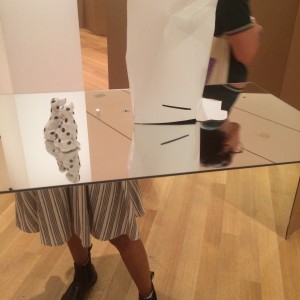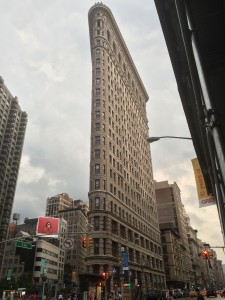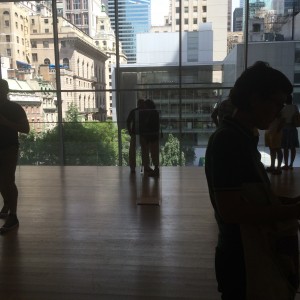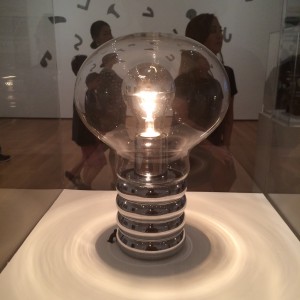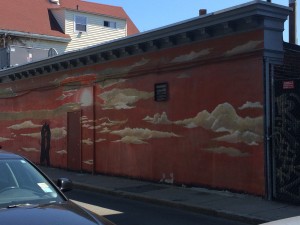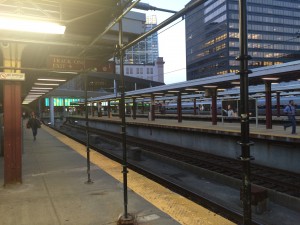Welcome to the official blog of the NEWT REU internship program, where students from Rice, Arizona State University, University of Texas El Paso, and Yale, will share their experiences and stories from their summer internship sessions. Students will be working on water-related projects with mentors in university labs throughout the United States and in the University of Malawi Polytechnic in Blantyre, Malawi. Click here to learn more about the NEWT Center and here to learn more about the NEWT Program’s education activities.
Queen Elizabeth Central Hospital
Monday in the morning we got t the Poly, looking for Dr. Leautaud. We found her in the design studio, we went outside to talk to her, we explained to he what we had been doing and she decided that this project was not appropriate for us, just like I thought. She explained how we are our own program and should not be involved with outside sources.
We were back to testing how well the moringa seed purifies the water. After we talked to her we scheduled a trip to the Lunzu school site to collect samples and to start testing the seed. We were told we needed to travel with one of our advisors, which were never around. We emailed one of them and he said that he could come with us, just so he would cancel on us five minutes before leaving to the site. For a second time we got shut down. We tried to come up with a project that did not require us going after our advisors so they could travel with us. We remembered that Dr. Leautaud had told us something about testing the water at Queens Elizabeth Central Hospital, which is right next to the Poly. We set up a meeting with the Medical director at the Hospital, we wrote a letter that asked the medical director to please let us test their water, for academic reasons, which Dr. Mkandawire signed. We took this letter to the medical director and she agreed to let us test the water at the hospital. This project seemed great since the hospital is right next to the Polytechnic, and Queens Elizabeth was having some trouble with its water source. We were ready to start sampling their water, we even went to another hospital and scheduled a meeting with their medical director to ask for permission to test their water to compare the quality of the water in both hospitals. First we wanted to get a heads up from Dr. Leautaud. We met with her and got turned down for a third time.
Third week
We continued looking for sites to build the system in. We first traveled to a primary school in Lunzu. Five minutes walking from the school was an open water reservoir, which was their source of drinking water. We later traveled to Chikwawa. In order to get to Chikwawa Dr. Mkandawire drove us to a minibus station, we were on a minibus for about an hour, from where the minibus dropped us off a driver picked us up, and he drove us thirty minutes up the mountain, this drive up the mountain required a four-wheel drive. Once we got to Chikwawa we talked with the people that lived there, and they showed us their water source, which was a borehole. We were only able to get water samples at the school site at Lunzu, since I was not able to sterilize the bottles the morning we left for Chikwawa because someone was cooking sweet potatoes in the autoclave. The Lunzu sample showed 49 E.coli coliform forming units. We sat and tried to come to a consensus as to where we wanted to build the system. Many variables affected this decision, I thought, the school site in Lunzu was most suitable, not only because it was highly contaminated with E.coli, but because getting transportation there would not be a problem, unlike to Chikwawa, which required a four wheel drive. . The next day in the morning Aaron somehow, without having anyone agree on this, decided that we were going to build the system in Chikwawa. The rest of the week we were out on Blantyre shopping for materials to build the system. Aaron found a lodge that we would stay at for a whole week so we would not have to travel back and fourth every day from the Poly to Chikwawa. We were scheduled to leave the coming Monday and stay in Chikwawa the whole week building the system.
Brock emailed Dr. Loyo and Dr. Leataud telling them that we were leaving for the next week, and asking them if there was any procedure we should take before leaving. Dr. Leautaud responded to the email right away telling us to not leave on Monday, that she wanted to meet with us that Monday.
Week of June 19-25 Part Two
Because the faculty was unable to attend, we had to cancel our trip. In order to find an even easier access site, we began to contact the Queens Elizabeth Central Hospital as well as Beit Cure Hospital to see if they’d let us test their water and see if we could devise a treatment with Moringa seed incase their water needed improving. Because we also would need written permission from the water board in the city, it seemed unlikely that this idea would work out, either. Thankfully, the Dean of Engineering at the Polytechnic, said she could take us to the Bangwe Township, specifically to the Ntopwa Village to open well water sources. Additionally, a civil engineering staff member was near the site, so we would be able to visit frequently without issue. It seems that next week will prove very exciting because of this new opportunity.
Week of June 19-25 Part One
Monday, we were originally scheduled to go to Chikwawa and begin working on the Ndlema Village Water Treat Project. This would have been transporting the barrels and all materials up early Monday morning, building a platform, starting work on the bio char by end of day Tuesday. It would not have been until Saturday, when we assembled the apparatus, that we would have returned to Blantyre. However, because of the length of trip involved, spotty cell service, and lack of faculty oversight available, we postponed the trip until later in the week. It was then decided that the risks involved in this project, as well as the issues with simply building a treatment system and then leaving, were too much to continue.
Therefore, it was back to the drawing board. We decided to look for a closer village, one where a faculty member could hopefully be more available to supervise in case anything happened. We would be less focused on creating an entire water treatment system and instead try to work through the moringa seed dosage, method of dosage, and time of treatment. Biological contaminants, such as e. coli and coliform count, and turbidity would be the tests used to determine the effectiveness. A planned trip to the school site in Lunzu is planned for Thursday.
and then there were two… weeks left
This fifth week has been very eventful to say the least. I have continued to make samples in preparation for the desired characterization tests. A graduate student ran the characterization tests for me and sent the data files. I used excel to make the plots and interpret the data. I used ChemDraw, a drawing toolkit, to create a schematic for an overview of my research project.
The figure shows how we will transform our starting material into reduced graphene oxide functionalized with nanoparticles. I am currently on the last step where magnetite nanoparticles are mixed with rGO for functionalization. Once this is done, several characterization tests will be run to assess the successfulness of the experiments. In my Friday presentation, I summarized most of what I have been working on and also included characterization data for graphene oxide and the magnetite nanoparticles. I have IR data for both samples, indicating which functional groups are found in the sample. For the nanoparticles, I also have Brunauer-Emmett-Teller (BET) data, which gives the surface area per gram of material. Below, thermo gravimetric analysis (TGA) shows how the mass of the sample changes at various temperatures. We are interested in the potential application of magnetite nanoparticles in extremely hot environments and this data shows the temperatures at which the sample begins to decompose.
My parents drove to El Paso to visit for part of the weekend. It was really nice to catch up with them and tell them about all of my experiences here during the internship. We went shopping and ate at the Mesa Street Grill afterwards. The place was pretty nice and they prepared one of my favorite deserts, bananas foster, table side.
We also enjoyed a few beverages at the Hilton Garden Inn minibar. The bartender recommended that we try this cucumber drink that is apparently popular in the El Paso area. It comes with this spicy chile powder on the rim, called Tajín.
After my parents left Saturday morning, I had the chance to finally put my passport to use. I went to Juarez for the first time with some of my coworkers and had the chance to test out a couple Spanish phrases I learned. Although the people, places, and atmosphere were all very different, I thoroughly enjoyed the experience.
Polymers and Such
Does it ever end? Research seems to be never ending, even after you publish a paper. There always seems to be something you can test more, expand further, push to no end, but I guess that’s science. How will I put an end to my research here at Yale? Two weeks left and I’m still learning so much. Not only to do with my research but life in general. My month on the East Coast has been more than rewarding and I’d like to think that I’ve grown and matured in many ways. The past two weeks have been eventful and hectic (in the best way possible). Membrane modifications coincided with travels to New York. Hours of contact measurements preceded a trip to Boston. And now we’re working on testing a modified membrane in the RO system just before I make my way to New York for the last time before my time on the East comes to a end.
The week before last was mainly filled by contact angle measurements and calculations of the interfacial energies between the gypsum crystals, water, and surface. Last week I was introduced to ATRP or atom transfer radical polymerization, which is the versatile synthetic tool we will be utilizing to modify the commercial membranes. This process enables the preparation of new (co)polymers with precisely controlled molecular weights, relatively low disparities, composition, and diverse functionalities. We worked with Chanhee, who is working on creating an omniphobic surface that is permeable to only water vapor (so cool, right?). The first step was in preparation for polymer and consisted of applying a PDA coating to the membranes in order for the desired polymers to be attached later on. Then after 20 minutes of PDA, the membrane was coated with an initiator that allows the ATRP to take place. The initiator polymerizes the surface, on which the desired zwitterionic polymers actually attach to. We allowed ATRP to take place for an hour, while Chanhee left one of his membranes for two. It is important to know that modification of the membranes varies as the amount of time for each coating varies.
The point of attaching the zwitterionic polymers or modifying the membrane at all is to make the membranes more hydrophilic. This lab is really pioneering the use of ATRP for non-biofouling purposes, so a lot of uncertainty exists with testing the modified membranes, which we will begin today. Our hopes are that a more hydrophilic surface will cause more water molecules rather than gypsum crystals to gravitate towards the surface of the membrane and attach. Just like if you want to sit in a full classroom, you would have to displace someone from their seat, if water molecules cover the entire surface then there would be no room for gypsum crystals to position themselves.
I’m learning a lot and am realizing, not only how important chemistry is, but how often unpredictable obstacles can occur in research. Recently, in a meeting, Elimelech was explaining how unexpected events can lead to schedule changes and, as result, everything ends up taking a lot longer than initially planned. (The following Tuesday, the chiller used to control the RO system temperature wasn’t running properly so we had to postpone our experiment). All of these new chemical processes and life lessons were complimented by experiences of new lifestyles and city cultures. My first trip out of New Haven was to Boston where I met up with my roommates from Rice. Then I traveled to New York the following weekend to see my best friend from high school. I must say that I do prefer New York over Boston, but the city was rich in history, which was prevalent from its charming architecture and urban design.
Another aspect of Ph.D life that I was not familiar with is conferences. There is a conference at a university in New Hampshire that Humberto is attending at the end of this month, where he will be presenting his research along with other graduate students. It’s just another aspect of being a research student, and provides him with the opportunity to share his ideas with experts in his field and receive feedback on his project. This event, however, has added an extra time constraint to his current work because he wants to be more than prepared with data and analyses for questions and considerations from his colleagues. It must be stressful preparing for a conference, but it’s reassuring to have a community of scholars to support your efforts.
These five weeks have flown by and I’m excited to see how things come to an end with regards to my research. I hope I come away with conclusive results and a wealth of knowledge. Look out for more updates on how our modified membrane compares to the commercial grade. Below are some pictures I took throughout my adventures in the big cities (includes some artwork from the MoMA).
Optimism is Key
Another week has passed and we still haven’t run any real tests on the CDI. All of the electrodes finally arrived, but we now face the challenge of connecting them to the power supply. We might have to purchase titanium plates but I’d like to find another conductive, non-corrosive material we don’t have to order and wait for. The creative juices are definitely flowing freely with this project, that’s for sure. Also, a new power supply should arrive soon that will allow us to automize the system, which will be an interesting challenge since I have no experience with labview. Hopefully, all goes well. Honestly, it is a bit frustrating not being able to run the system and I think we underestimated the amount of time acquiring all of the materials would take, but I’m remaining optimistic.
Time
Sorry I am a little late with my weekly blog but this past week has been really busy especially with the holiday weekend. Last Wednesday I started two online classes that I enrolled in through ASU. I’m taking a basic calculus III class, as well as a Beatles class (the musicians). So far Calc III has taken up a good chunk of my free time and a bit of my weekend, however, because of this 3 day weekend I am actually ahead of the class so I’m making sure I don’t fall behind.
As far as my work and projects go the mechanical project fabrication portion is taking a bit longer than should be to get done. This is mainly because of getting our hands on some tools to actual getting the work done. None the less, one of our group member brought some tools from home so we should be finish up this week. Everything is coming a long nicely, even though we don’t have everything on the skid yet we have been comissioning everything as it came in. The solar panel took some time to understand but with a little time and a call to customer service we understand our electrical source really well.
My computational modeling work has also been really rewarding, so far I have been just computing different numbers to see the change in flux and temperature throughout the system. It is taking a good amount of my time, mainly because once I started testing some longer module lengths, the longer it is taking for the program to run. For example I am running a geometry length of 0.5 cm with the permeate temperature at 45 C and flowing in at 4 cm/s, it is going to take about 25-30 min to run the program. As to a smaller length like 0.02 with the same parameter which can take about 8-10 min. I have learned that once the program has runned a few times it take the time is shorter by a few minutes. The beauty of technology, what takes me 30 min to crunch a few number would probably take a few days to run actual number on a full scale system.
Till next time,
Hazel nut (Evelyn)
One month has passed…
The first month of our time at Rice is over, and it does not seems like a month has pass. I have been working so hard in learning all the techniques and developing my project that time has just flyby. I have learned about the use of different instruments, different techniques when platting, ways to analyze DNA, and how to prepare agar. This week I started discussing with my mentor, the analyzes that my project was missing. Next week we will further discuss the topic, and start the writing of my report.
In the weekend, I had the chance to get to know my friends from the NEWT program better. Tensae, Evelyn and I, decided to take the metro and go to explore the city. I am glad to say that I will not only get an amazing learning experience out of this program, but also awesome friends.
Week 4: Score
I think this past week has been by far the most productive. I have been staying later than usual each day in lab and I’ve gotten pretty deep into my project. I don’t mind working late as long as there are other people around and I have good company. Sometimes, I’ll get really excited to work in the lab just because there’s not too much going on in El Paso anyways. I have been making significant progress and have also been working on an additional NEWT project with another student.
With 3 weeks remaining, I will focus on preparing samples and running various characterization tests. I am familiar with some of these techniques, but there are some new ones I had to look up. Overall, we will be doing SEM, TEM, EDX, XRD, IR, TGA, and BET analysis for each sample. I took the time to look up each of these to familiarize myself with the theory, operation principles, and applications. This week, there was a NEWT thrust 1 meeting where I got to hear other people discuss the work they are doing. I did not give any updates on my work, but I enjoyed listening to others. At the next group meeting, I will be giving a brief PowerPoint presentation to summarize my progress.





